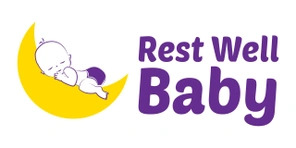Blog

How To Keep My Child From Climbing Out Of The Crib
Tips for Keeping Your Little One Safely in Their Crib:
As a pediatric sleep coach, I've seen it all: the alarming, moment a parent realizes their tiny human is attempting to escape their crib. It's a rite of passage for many toddlers, a testament to their growing independence and curiosity. But regardless of the developmental milestone it represents, a crib-climbing attempt is a major safety signal that demands immediate attention.
Before you panic and race to buy a toddler bed, let's talk about why keeping your child in their crib for as long as safely possible – ideally until at least three years old – is often the best choice for everyone.
Why the Crib is Still King (Until Age 3!)
You might be thinking, "My child is clearly ready for a 'big kid bed' if they're trying to climb out!" And while that logic is understandable, the reality is that the safety and predictability of a crib offer significant benefits for a child's sleep development.
Safety First: This is the big one. A crib is a contained, safe sleep environment. Once a child is in a bed, they have unrestricted access to their room and potentially beyond. This means increased risks of falls, getting into unsafe items, or wandering around the house while you're asleep. Young toddlers, even those who seem coordinated, often lack the impulse control and understanding of consequences to navigate their environment safely unsupervised at night.
Boundaries and Predictability: Cribs provide clear physical boundaries, which translate to clear sleep boundaries for your child. They learn that the crib is for sleeping, and this consistency helps establish healthy sleep habits. A bed, on the other hand, can feel like an open invitation to play, leading to bedtime battles and frequent nighttime wakings.
Continued Sleep Training Success: If you've worked hard to establish good sleep habits, transitioning to a bed too early can derail all your efforts. It's much easier for a child to pop out of bed for "just one more hug" or "a drink of water" than it is to climb out of a crib.
Developmental Readiness: Around age three, children typically develop better impulse control, a stronger understanding of rules, and the cognitive ability to grasp the concept of staying in their own bed all night. Prior to this, their developing brains are often just not quite ready for that level of freedom and responsibility during sleep hours.
Help! My Little Monkey is Trying to Escape!
So, what do you do when your child starts attempting their great crib escape? Here are some strategies to safely keep them in their crib for longer:
Lower the Mattress: This is the most immediate and effective safety measure. Make sure the crib mattress is at its absolute lowest setting. If your child's chest is higher than the top of the crib rail when standing, it's time to take action.
Consider Climb-Limiting Pajamas (e.g., Little Grounders): These specialized pajamas have a flexible piece of fabric connecting the legs, which significantly limits a child's ability to lift a single leg high enough to climb out of the crib. They offer a safe and effective way to deter climbing while still allowing for comfortable movement within the crib.
Check for Footholds: Are there any pillows, large stuffed animals, or blankets in the crib that your child could be using as a step? Remove anything that could provide leverage for climbing. Keep the crib environment as clear as possible.
Consider a Crib Tent (with Caution): Some parents opt for a crib tent or canopy designed to prevent climbing. However, it is crucial to purchase a tent that is specifically designed for cribs and meets current safety standards. Ensure there are no entrapment hazards and that the tent is breathable. Always supervise its use and discontinue if you have any safety concerns.
Address the "Why": Why is your child trying to climb out? Are they well-rested during the day? Is their bedtime too early or too late? Sometimes, an overtired or undertired child will protest sleep by trying to escape. Review your child's sleep schedule to ensure it's developmentally appropriate.
Teach Safety and Boundaries (Consistently): While you can't physically stop a determined climber once they're strong enough, you can start consistently teaching them that the crib is a safe place for sleeping and that climbing out is not safe. When they attempt to climb, gently but firmly put them back down. Use a calm, consistent phrase like, "Crib is for sleeping. We stay safe in the crib," or "Feet down. Climbing is not safe." Repetition and consistency with this message, paired with your actions, help them internalize the boundary and the safety reason behind it.
Prioritize Daytime Play and Exploration: A child who feels restricted might be more inclined to test boundaries at night. Ensure your child has plenty of opportunities for active, independent play and exploration during the day. This can help them feel less of a need to "escape" at night.
The Final Safety Check: If it's No Longer Safe: Despite all efforts, if your child is consistently climbing out of the crib and it is no longer a safe sleep environment, it's time to transition. At that point, safety outweighs the benefits of staying in the crib longer.
The crib climbing phase can be stressful, but with a few preventative measures and a clear understanding of developmental readiness, you can often keep your little one safely contained until they're truly ready for the big kid bed. Remember, patience and consistency are your best friends in the world of pediatric sleep!
If you're facing challenges, please feel free to reach out to book your 30 minute Sweet Dreams Starter call to learn how I can help your family get the gift of sleep.
Yours in sleep,
Tracie / Rest Well Baby
www.restwellbaby.com
Tracie Kesatie is a Certified Gentle Sleep Coach dedicated to helping families with little ones 0-10 years of age achieve a restful night's sleep.
Disclaimer: This article provides general information and is not intended as medical advice. Always consult with your pediatrician for any concerns about your child's health.
Blog





